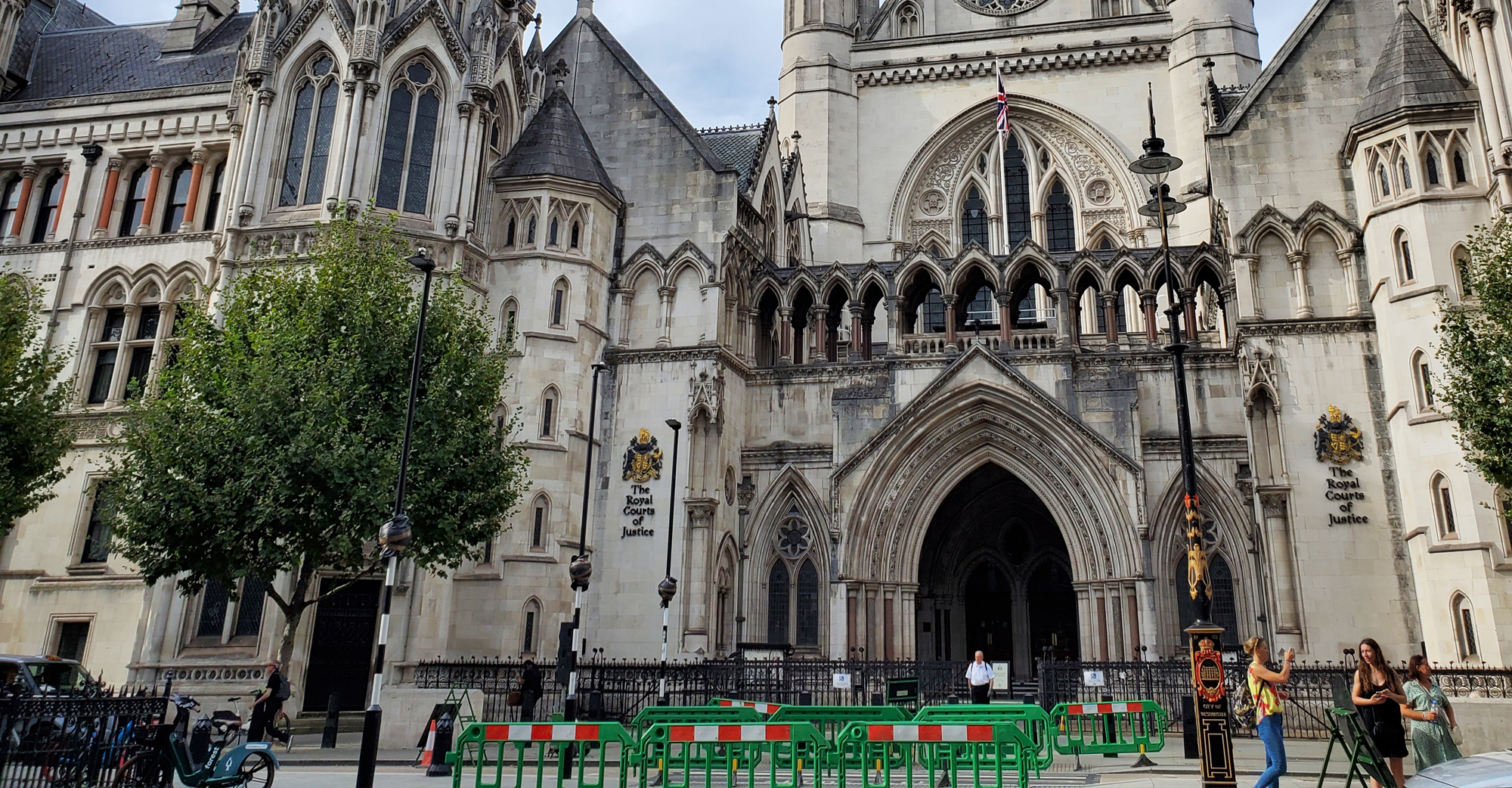What is the world’s most popular beer? Name the film score not composed by Italian legend Ennio Morricone. These and more are in our latest travel trivia game.
Global Trivia 33
You have multiple choices. An explanation and a reference comes after every question. There is no fixed order so you can choose from any of the boxes. The SHADED BOXES are what you already answered. Your final score is at the END. Don't hit REFRESH unless you want to start all over. This is part of a continuing series in Traveling Boy.
Start
Congratulations!
You have completed Global Trivia 33.

You scored %%SCORE%% out of a possible 5 points.
Your performance was: %%RATING%%
Your answers are highlighted below.
Question 1 |
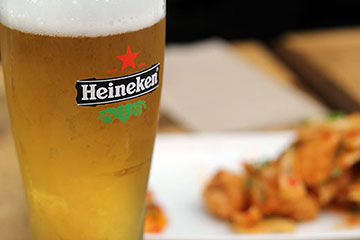
Is Heineken the biggest selling beer in the world?
A | Yes |
B | No |
Question 1 :
Answer: B. No
Beer is proof that God loves us and wants us to be happy. — Benjamin Franklin
Top 10 Largest Beer Companies and Beer Brands in the World 2020:
1) Anheuser-Busch InBev: Despite the predictions about the global and American beer market continuing to lose ground to spirits, wine and marijuana, the bigger beer manufacturers have surprisingly reported strong growth and earnings in 2018. Anheuser-Busch InBev, based in Belgium, has surpassed growth expectations compared to its competitors and consequently sits atop the global beer market, making it one of the largest beer companies in the world. Although sales of its flagship beer brands Bud Light and Budweiser continue to drop, AB InBev’s acquisition of SABMiller recently combined with earlier rights to Corona and Stella Artois has boosted its value globally. The brewer distributes its product portfolio of 500 beer brands through a massive network of over 600 independent company-owned distributors and wholesalers nationwide.
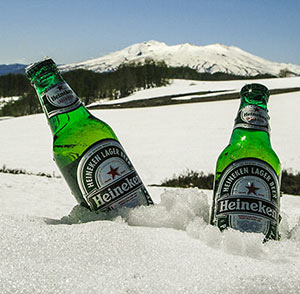
2) Heineken: Dutch-based beer brand Heineken has been a global brewing leader for the last 150 years. Today, as the No. 2 brewer in the world and No. 1 in Europe, the company is ramping up production via the use of advanced and breakthrough technologies such as big data and artificial intelligence (AI). Heineken sells more than 8.5 million barrels of its beer brands in the U.S and expects those numbers to increase with data-driven developments and AI augmentation to its operations, advertising, and customer experience. Founded in 1864, the company owns over 160 breweries in more than 70 countries as. Heineken produces regional, local, international and specialty beers and ciders. The company’s international beer brands include Amstel, Desperados, Sol, Affligem, Tiger, Tecate, Red Stripe and Krušovice.
3) China Resources Snow Breweries: Headquartered in Hong Kong, China Resources’ beer business is well known for its “Snow” beverage, accounting for about 20% of the Chinese beer market. One of its flagship beer brands, Snow is now one of the top-selling beer brands in the world. Although a lead in the domestic beer market, China Resources’ beer portfolio is little known elsewhere. As of 2017, it operates 98 breweries in 25 provinces, administered municipalities, and autonomous regions in Mainland China with an annual production capacity of more than 20 million kiloliters. China Resources Snow Breweries was a joint venture between SABMiller and China Resources Enterprise. However, after the former’s acquisition by Anheuser Busch InBev, China Resources bought out the remaining stake.
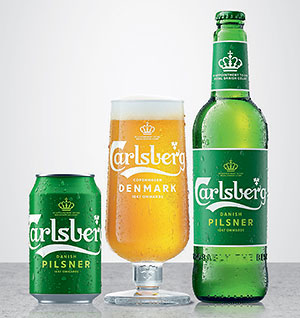
4) Carlsberg: Founded in 1847 by J.C. Jacobsen, Carlsberg is one of the leading international brewery groups in the world today, with a vast portfolio of beer and other beverage brands. Since the 1990s, Carlsberg has been achieving steady but modest growth in sales and profits, despite an intensely competitive beer market. In March 2016, the Carlsberg Group introduced its new strategy, SAIL’22, to set a new direction for the Group with a significant focus on its core beer business and distinct areas for future progress. Once a big beer brand with a small corporate footprint, Carlsberg Group has become the world’s fourth-largest beer company within the past two decades, acquiring other small beer brands such as Kronenbourg. The company now operates 140 beer brands worldwide.
5) Molson Coors Brewing: Incorporated in 2003, Molson Coors is a leading global brewer with 31 breweries, selling its diverse portfolio of over 90 strategic and partner brands in more than 50 countries. The company has a strong presence and brand momentum in three of the world’s largest markets. It is the second-largest beer company in the US by way of MillerCoors and SABMiller, a leading brewer in Canada via Molson Coors Canada, and a top-tier brewer in the UK and Central Europe through Molson Coors Europe. Long-time adversaries, US-based Molson Coors and UK-based SABMiller put aside their differences to merge their operations in the US and Puerto Rico in a joint venture, MillerCoors. MCBC continues to follow a growth strategy that includes building a stronger brand portfolio, growing the market share among its core brands, delivering value-added innovation, and growing its business in the premium, craft, and cider markets.
6) Tsingtao Brewery Group: Tsingtao Beer, one of China’s oldest beer companies, is gaining immense popularity around the world and has been successful in establishing a high-end Chinese beer brand image worldwide. With a history 115 years long, the Qingdao-based brewer has been selling its products in more than 100 countries. Its Western Europe sales grew 8% last year, while sales in the overseas market increased by 12%. As per the Centre of International Communication Studies, Tsingtao has acquired over 90% brand recognition in several developed countries in Europe and North America. This beer brand is developing more and more customized products to meet the growing demands of different customers, including beverages brewed with dates and peaches. Tsingtao is looking forward to experimenting with new tastes and varieties through co-operation with its European partners. Tsingtao adheres to a “high-quality, high-visibility and high-price” strategy.
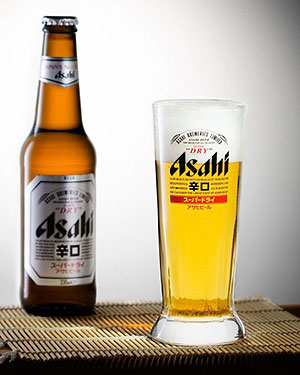
7) Asahi: Founded in 1889 in Osaka as the Osaka Beer Company, Asahi Breweries kept the No. 1 position in sales volume in Japan for twelve straight years after it launched Asahi Super Dry, Japan’s first dry draft beer. The company, celebrating its 128th anniversary, produces a wide variety of beer products and other alcoholic beverages to meet the varied needs of its customers. The Asahi Breweries Group is expanding its business to products beyond just alcohol, including foods and pharmaceuticals. Asahi Breweries is reaping the benefits after strengthening its foothold in the European marketplace. It did this by acquiring beer brands that raised its status to one of the five biggest brewers in Asia. As demand for beer products wane at home and local competition with rivals like Kirin Holdings Co. intensifies, Asahi is stepping up to expand overseas.
8) Yanjing: Beijing Yanjing Beer Group, a China-based beer company, started off as Yanjing Brewery before consolidating into a group of companies that is categorized by the state, and is known for its top-quality beer products. Beijing Yanjing Beer is currently the country’s fourth most popular beer brand, and one of the world’s largest beer companies. The company distributes its vast product portfolio, which includes beer, distilled wine, feed, materials, yeast, plastic boxes, and mineral water under the brands Liquan, Huiguan, Yanjing, and Xuelu. Yanjing mainly targets the domestic market, particularly South China and North China.
9) Kirin: Japan-based Kirin is one of the largest producers of beverages, and its subsidiary Kirin Brewery Company is one of the largest beer brands in the world. The company holds a stake in Myanmar Brewery Limited as well as Asia Pacific Breweries and owns Kirin Europe, Kirin Brewery of America, Philippine-based San Miguel Brewery, and other subsidiaries. In Japan, the company’s Ichiban Shibori and Kirin Lager are well-known beer brands, while its Kirin Tanrei is a popular low-malt beer.
10) Groupe Castel: The Castel Group was founded in 1949. For over six decades, the company has devoted its skills and energy to spreading the word about French wines globally, and developing its soft drink and beer sectors in Africa. Castel is a globally recognized beverage name and one of the world’s largest beer companies, symbolized by a wide range of acclaimed Châteaux and brands, and with an established presence in over 130 countries. The majority of Groupe Castel beer products are produced in Africa, where it expanded in 1990 with the purchase of Brasseries et Glacières Internationales (BGI). Flag and Castel are its most popular and enduring beer brands.
View more information about the top beer companies in the world, @ Global Beer Market Report Sample for FREE!
Beer is proof that God loves us and wants us to be happy. — Benjamin Franklin
Top 10 Largest Beer Companies and Beer Brands in the World 2020:
1) Anheuser-Busch InBev: Despite the predictions about the global and American beer market continuing to lose ground to spirits, wine and marijuana, the bigger beer manufacturers have surprisingly reported strong growth and earnings in 2018. Anheuser-Busch InBev, based in Belgium, has surpassed growth expectations compared to its competitors and consequently sits atop the global beer market, making it one of the largest beer companies in the world. Although sales of its flagship beer brands Bud Light and Budweiser continue to drop, AB InBev’s acquisition of SABMiller recently combined with earlier rights to Corona and Stella Artois has boosted its value globally. The brewer distributes its product portfolio of 500 beer brands through a massive network of over 600 independent company-owned distributors and wholesalers nationwide.

2) Heineken: Dutch-based beer brand Heineken has been a global brewing leader for the last 150 years. Today, as the No. 2 brewer in the world and No. 1 in Europe, the company is ramping up production via the use of advanced and breakthrough technologies such as big data and artificial intelligence (AI). Heineken sells more than 8.5 million barrels of its beer brands in the U.S and expects those numbers to increase with data-driven developments and AI augmentation to its operations, advertising, and customer experience. Founded in 1864, the company owns over 160 breweries in more than 70 countries as. Heineken produces regional, local, international and specialty beers and ciders. The company’s international beer brands include Amstel, Desperados, Sol, Affligem, Tiger, Tecate, Red Stripe and Krušovice.
3) China Resources Snow Breweries: Headquartered in Hong Kong, China Resources’ beer business is well known for its “Snow” beverage, accounting for about 20% of the Chinese beer market. One of its flagship beer brands, Snow is now one of the top-selling beer brands in the world. Although a lead in the domestic beer market, China Resources’ beer portfolio is little known elsewhere. As of 2017, it operates 98 breweries in 25 provinces, administered municipalities, and autonomous regions in Mainland China with an annual production capacity of more than 20 million kiloliters. China Resources Snow Breweries was a joint venture between SABMiller and China Resources Enterprise. However, after the former’s acquisition by Anheuser Busch InBev, China Resources bought out the remaining stake.

4) Carlsberg: Founded in 1847 by J.C. Jacobsen, Carlsberg is one of the leading international brewery groups in the world today, with a vast portfolio of beer and other beverage brands. Since the 1990s, Carlsberg has been achieving steady but modest growth in sales and profits, despite an intensely competitive beer market. In March 2016, the Carlsberg Group introduced its new strategy, SAIL’22, to set a new direction for the Group with a significant focus on its core beer business and distinct areas for future progress. Once a big beer brand with a small corporate footprint, Carlsberg Group has become the world’s fourth-largest beer company within the past two decades, acquiring other small beer brands such as Kronenbourg. The company now operates 140 beer brands worldwide.
5) Molson Coors Brewing: Incorporated in 2003, Molson Coors is a leading global brewer with 31 breweries, selling its diverse portfolio of over 90 strategic and partner brands in more than 50 countries. The company has a strong presence and brand momentum in three of the world’s largest markets. It is the second-largest beer company in the US by way of MillerCoors and SABMiller, a leading brewer in Canada via Molson Coors Canada, and a top-tier brewer in the UK and Central Europe through Molson Coors Europe. Long-time adversaries, US-based Molson Coors and UK-based SABMiller put aside their differences to merge their operations in the US and Puerto Rico in a joint venture, MillerCoors. MCBC continues to follow a growth strategy that includes building a stronger brand portfolio, growing the market share among its core brands, delivering value-added innovation, and growing its business in the premium, craft, and cider markets.
6) Tsingtao Brewery Group: Tsingtao Beer, one of China’s oldest beer companies, is gaining immense popularity around the world and has been successful in establishing a high-end Chinese beer brand image worldwide. With a history 115 years long, the Qingdao-based brewer has been selling its products in more than 100 countries. Its Western Europe sales grew 8% last year, while sales in the overseas market increased by 12%. As per the Centre of International Communication Studies, Tsingtao has acquired over 90% brand recognition in several developed countries in Europe and North America. This beer brand is developing more and more customized products to meet the growing demands of different customers, including beverages brewed with dates and peaches. Tsingtao is looking forward to experimenting with new tastes and varieties through co-operation with its European partners. Tsingtao adheres to a “high-quality, high-visibility and high-price” strategy.

7) Asahi: Founded in 1889 in Osaka as the Osaka Beer Company, Asahi Breweries kept the No. 1 position in sales volume in Japan for twelve straight years after it launched Asahi Super Dry, Japan’s first dry draft beer. The company, celebrating its 128th anniversary, produces a wide variety of beer products and other alcoholic beverages to meet the varied needs of its customers. The Asahi Breweries Group is expanding its business to products beyond just alcohol, including foods and pharmaceuticals. Asahi Breweries is reaping the benefits after strengthening its foothold in the European marketplace. It did this by acquiring beer brands that raised its status to one of the five biggest brewers in Asia. As demand for beer products wane at home and local competition with rivals like Kirin Holdings Co. intensifies, Asahi is stepping up to expand overseas.
8) Yanjing: Beijing Yanjing Beer Group, a China-based beer company, started off as Yanjing Brewery before consolidating into a group of companies that is categorized by the state, and is known for its top-quality beer products. Beijing Yanjing Beer is currently the country’s fourth most popular beer brand, and one of the world’s largest beer companies. The company distributes its vast product portfolio, which includes beer, distilled wine, feed, materials, yeast, plastic boxes, and mineral water under the brands Liquan, Huiguan, Yanjing, and Xuelu. Yanjing mainly targets the domestic market, particularly South China and North China.
9) Kirin: Japan-based Kirin is one of the largest producers of beverages, and its subsidiary Kirin Brewery Company is one of the largest beer brands in the world. The company holds a stake in Myanmar Brewery Limited as well as Asia Pacific Breweries and owns Kirin Europe, Kirin Brewery of America, Philippine-based San Miguel Brewery, and other subsidiaries. In Japan, the company’s Ichiban Shibori and Kirin Lager are well-known beer brands, while its Kirin Tanrei is a popular low-malt beer.
10) Groupe Castel: The Castel Group was founded in 1949. For over six decades, the company has devoted its skills and energy to spreading the word about French wines globally, and developing its soft drink and beer sectors in Africa. Castel is a globally recognized beverage name and one of the world’s largest beer companies, symbolized by a wide range of acclaimed Châteaux and brands, and with an established presence in over 130 countries. The majority of Groupe Castel beer products are produced in Africa, where it expanded in 1990 with the purchase of Brasseries et Glacières Internationales (BGI). Flag and Castel are its most popular and enduring beer brands.
View more information about the top beer companies in the world, @ Global Beer Market Report Sample for FREE!
Question 2 |
Name the film score not composed by Italian legend Ennio Morricone
A | Duck You Sucker |
B | For a Few Dollars More |
C | Hang ‘Em High |
D | Mission to Mars |
E | The Untouchables |
Question 2 :
Answer: C. Hang ‘Em High
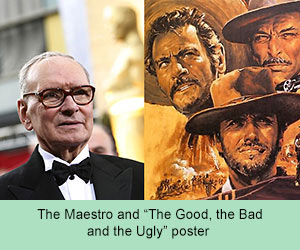
I use realistic sounds in a psychological way. With ‘The Good, the Bad and the Ugly,’ I used animal sounds – as you say, the coyote sound – so the sound of the animal became the main theme of the movie. – Ennio Morricone
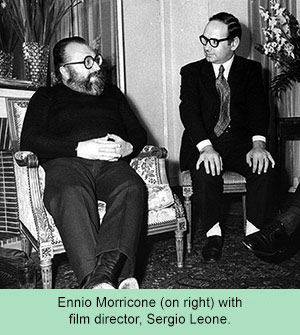
Morricone died this month at age 91. He was easily regarded as the most innovative and irreverent composer of film scores for decades. Best known for his collaborations with director Sergio Leone on his Spaghetti Westerns, Morricone scored approximately 500 films, working with a who’s who of landmark directors: Bernardo Bertolucci, Pier Paolo Pasolini, Terrence Malick, John Carpenter, Quentin Tarantino and many more.
I use realistic sounds in a psychological way. With ‘The Good, the Bad and the Ugly,’ I used animal sounds – as you say, the coyote sound – so the sound of the animal became the main theme of the movie. – Ennio Morricone
Morricone died this month at age 91. He was easily regarded as the most innovative and irreverent composer of film scores for decades. Best known for his collaborations with director Sergio Leone on his Spaghetti Westerns, Morricone scored approximately 500 films, working with a who’s who of landmark directors: Bernardo Bertolucci, Pier Paolo Pasolini, Terrence Malick, John Carpenter, Quentin Tarantino and many more.
Question 3 |
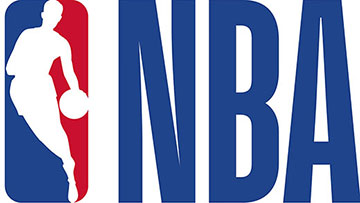
Name the NBA legendary center who never fouled out in a game.
A | Kareem Abdul-Jabbar |
B | Wilt Chamberlain |
C | Patrick Ewing |
D | Shaquille O’Neal |
E | Bill Russell |
Question 3 :
Answer: B. Wilt Chamberlain
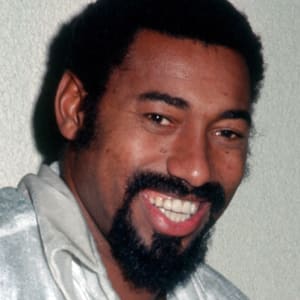
You must understand as a kid of color in those days, the Harlem Globetrotters were like being movie stars. – Wilt Chamberlain
Wilt Chamberlain: 1936–1999
Wilt Chamberlain was the first NBA player to score more than 30,000 cumulative points over his career, and the first and only player to score 100 points in a single game.
Known as "Wilt the Stilt" for his 7'1" frame, Wilt Chamberlain was a Harlem Globetrotter before joining the Philadelphia Warriors. He achieved an average of 30.1 points per game over his career and holds several records, including for most points scored in one season (4,029) and most points scored in a single game (100). Chamberlain was inducted into the Basketball Hall of Fame in 1978. He died in Bel-Air, California, in 1999.
Wilton Norman Chamberlain was born on August 21, 1936, in Philadelphia, Pennsylvania. Chamberlain was regarded as one of the greatest basketball players of all time as the first NBA player to score more than 30,000 points during his professional career.
Chamberlain was a standout player at Overbrook High School in Philadelphia. He played on the school's varsity team for three years, scoring more than 2,200 points in total. Standing at 6'11" tall at the time, Chamberlain physically dominated other players. He eventually reached his full height of a staggering 7'1" tall. Many of his nicknames were derived from his stature. He hated being called "Wilt the Stilt," or "the Stilt," which came from a local reporter covering high school athletics. But Chamberlain didn't mind "The Big Dipper," or "Dipper," a nickname given to him by friends because he had to duck his head when passing through a doorframe.
When it came time for college, Chamberlain was sought after by many top college basketball teams. He chose to attend the University of Kansas, making his college basketball debut in 1956 with the Jayhawks, and leading the team to the NCAA finals in 1957. The Jayhawks were defeated by North Carolina, but Chamberlain was named "Most Outstanding Player" of the tournament. Continuing to excel, he made the all-America and all-conference teams the following season.
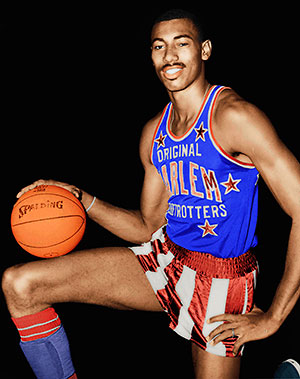
Leaving college in 1958, Chamberlain had to wait a year before going pro due to NBA rules. He chose to spend the next season performing with the Harlem Globetrotters before landing a spot with the Philadelphia Warriors. In 1959, Chamberlain played his first professional game in New York City against the Knicks, scoring 43 points. His impressive debut season netted him several prestigious honors, including the NBA Rookie of the Year and NBA Most Valuable Player awards. Also during this season, Chamberlain began his rivalry with Celtics defensive star Bill Russell. The two were fierce competitors on the court, but they developed a friendship away from the game.
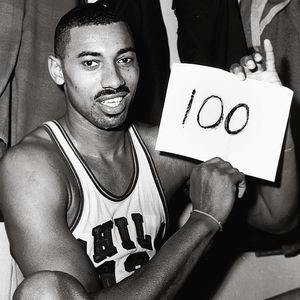
Chamberlain's most famous season, however, came in 1962. That March, he became the first NBA player to score 100 points in a game, setting a league record for the highest number of points scored in a single game (which he still holds today). By season's end, Chamberlain racked up more than 4,000 points — becoming the first NBA player to do so — scoring an average of 50.4 points per game. At the top of his game, Chamberlain was selected for the All-NBA first team for three consecutive years: 1960, 1961 and 1962.
Chamberlain stayed with the Warriors as they moved out to San Francisco in 1962. He continued to play well, averaging more than 44 points per game for the 1962-63 season and almost 37 points per game for the 1963-64 season. Returning to his hometown in 1965, Chamberlain joined the Philadelphia 76ers. There he helped his team score an NBA championship win over his former team. Along the way to the championship, he also assisted the Sixers in defeating the Boston Celtics in the Eastern Division Finals. The Celtics were knocked out of the running after eight consecutive championship wins. Crowds gathered to watch the latest match between two top center players: Chamberlain and Bill Russell.
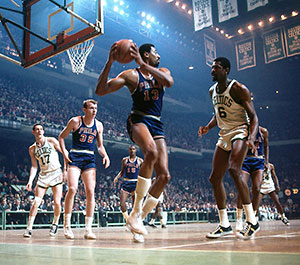
Traded to the Los Angeles Lakers in 1968, Chamberlain again proved that he was a competitive and successful athlete. He helped the Lakers win the 1972 NBA championship, triumphing over the New York Knicks in five straight games, and was named the NBA Finals MVP.
By the time he retired in 1973, Chamberlain had amassed an amazing array of career statistics. He had played in 1,045 games and achieved an average of 30.1 points per game — the NBA points-per-game record until Michael Jordan broke it in 1998. To this day, Additionally, Chamberlain remains notable for never fouling out of an NBA game.
After his retirement, Chamberlain explored other opportunities. He published his autobiography, Wilt: Just Like Any Other 7-Foot Black Millionaire Who Lives Next Door, in 1973. He tried coaching for a time, and was a popular pitchman for commercials. Chamberlain later branched out in acting, appearing in the 1984 action film Conan the Destroyer with Arnold Schwarzenegger.
Still, his feats as a player were not forgotten. In 1978, Chamberlain was inducted into the Basketball Hall of Fame. He was named one of the top all-time 50 NBA players in 1996. In 1991, Chamberlain claimed another, more unusual distinction, when he wrote in his book A View from Above that he had slept with more than 20,000 women during his lifetime.
Chamberlain died of heart failure on October 12, 1999, at his Los Angeles home. He once said that "no one cheered for Goliath," but the response to his passing proved that to be false. "Wilt was one of the greatest ever, and we will never see another like him," said basketball star Kareem Abdul-Jabbar. His former rival Bill Russell told the press that "he and I will be friends through eternity."

You must understand as a kid of color in those days, the Harlem Globetrotters were like being movie stars. – Wilt Chamberlain
Wilt Chamberlain: 1936–1999
Wilt Chamberlain was the first NBA player to score more than 30,000 cumulative points over his career, and the first and only player to score 100 points in a single game.
Known as "Wilt the Stilt" for his 7'1" frame, Wilt Chamberlain was a Harlem Globetrotter before joining the Philadelphia Warriors. He achieved an average of 30.1 points per game over his career and holds several records, including for most points scored in one season (4,029) and most points scored in a single game (100). Chamberlain was inducted into the Basketball Hall of Fame in 1978. He died in Bel-Air, California, in 1999.
Wilton Norman Chamberlain was born on August 21, 1936, in Philadelphia, Pennsylvania. Chamberlain was regarded as one of the greatest basketball players of all time as the first NBA player to score more than 30,000 points during his professional career.
Chamberlain was a standout player at Overbrook High School in Philadelphia. He played on the school's varsity team for three years, scoring more than 2,200 points in total. Standing at 6'11" tall at the time, Chamberlain physically dominated other players. He eventually reached his full height of a staggering 7'1" tall. Many of his nicknames were derived from his stature. He hated being called "Wilt the Stilt," or "the Stilt," which came from a local reporter covering high school athletics. But Chamberlain didn't mind "The Big Dipper," or "Dipper," a nickname given to him by friends because he had to duck his head when passing through a doorframe.
When it came time for college, Chamberlain was sought after by many top college basketball teams. He chose to attend the University of Kansas, making his college basketball debut in 1956 with the Jayhawks, and leading the team to the NCAA finals in 1957. The Jayhawks were defeated by North Carolina, but Chamberlain was named "Most Outstanding Player" of the tournament. Continuing to excel, he made the all-America and all-conference teams the following season.

Leaving college in 1958, Chamberlain had to wait a year before going pro due to NBA rules. He chose to spend the next season performing with the Harlem Globetrotters before landing a spot with the Philadelphia Warriors. In 1959, Chamberlain played his first professional game in New York City against the Knicks, scoring 43 points. His impressive debut season netted him several prestigious honors, including the NBA Rookie of the Year and NBA Most Valuable Player awards. Also during this season, Chamberlain began his rivalry with Celtics defensive star Bill Russell. The two were fierce competitors on the court, but they developed a friendship away from the game.

Chamberlain's most famous season, however, came in 1962. That March, he became the first NBA player to score 100 points in a game, setting a league record for the highest number of points scored in a single game (which he still holds today). By season's end, Chamberlain racked up more than 4,000 points — becoming the first NBA player to do so — scoring an average of 50.4 points per game. At the top of his game, Chamberlain was selected for the All-NBA first team for three consecutive years: 1960, 1961 and 1962.
Chamberlain stayed with the Warriors as they moved out to San Francisco in 1962. He continued to play well, averaging more than 44 points per game for the 1962-63 season and almost 37 points per game for the 1963-64 season. Returning to his hometown in 1965, Chamberlain joined the Philadelphia 76ers. There he helped his team score an NBA championship win over his former team. Along the way to the championship, he also assisted the Sixers in defeating the Boston Celtics in the Eastern Division Finals. The Celtics were knocked out of the running after eight consecutive championship wins. Crowds gathered to watch the latest match between two top center players: Chamberlain and Bill Russell.

Traded to the Los Angeles Lakers in 1968, Chamberlain again proved that he was a competitive and successful athlete. He helped the Lakers win the 1972 NBA championship, triumphing over the New York Knicks in five straight games, and was named the NBA Finals MVP.
By the time he retired in 1973, Chamberlain had amassed an amazing array of career statistics. He had played in 1,045 games and achieved an average of 30.1 points per game — the NBA points-per-game record until Michael Jordan broke it in 1998. To this day, Additionally, Chamberlain remains notable for never fouling out of an NBA game.
After his retirement, Chamberlain explored other opportunities. He published his autobiography, Wilt: Just Like Any Other 7-Foot Black Millionaire Who Lives Next Door, in 1973. He tried coaching for a time, and was a popular pitchman for commercials. Chamberlain later branched out in acting, appearing in the 1984 action film Conan the Destroyer with Arnold Schwarzenegger.
Still, his feats as a player were not forgotten. In 1978, Chamberlain was inducted into the Basketball Hall of Fame. He was named one of the top all-time 50 NBA players in 1996. In 1991, Chamberlain claimed another, more unusual distinction, when he wrote in his book A View from Above that he had slept with more than 20,000 women during his lifetime.
Chamberlain died of heart failure on October 12, 1999, at his Los Angeles home. He once said that "no one cheered for Goliath," but the response to his passing proved that to be false. "Wilt was one of the greatest ever, and we will never see another like him," said basketball star Kareem Abdul-Jabbar. His former rival Bill Russell told the press that "he and I will be friends through eternity."
Question 4 |
Name the tragic event that did NOT occur on a ‘Bloody Sunday.’
A | Atlanta, Georgia (1864): Union General William Tecumseh Sherman’s attack on Atlanta during the Civil War. |
B | St. Petersburg, Russia (1905): The shooting death of 1,000 unarmed civilians by tsarist soldiers, while demonstrators attempted to petition Emperor Nicholas II at Winter Palace for social reforms. Sadly, Nicholas was not there. |
C | Dublin, Ireland (1920): The British Black & Tans’ random shooting of innocent Irish civilians in a football stadium, resulting in 14 deaths, in retaliation for IRA assassinations of 12 alleged British intelligence agents earlier that morning. |
D | Selma, Alabama (1965): An armed police attack on nonviolent Civil Rights Movement activists attempting a march to Montgomery, to exercise African-American citizens constitutional right to vote, in defiance of segregationist repression. |
E | Belfast, Northern Ireland (1972): Thirteen unarmed Roman Catholic civil rights demonstrators are shot dead by British Army paratroopers when marching in protest of the British policy of internment of suspected Irish nationalists. |
Question 4 :
Answer: A. Union General William Tecumseh Sherman’s attack on Atlanta commenced on a Friday, July 22, 1864.

War is cruelty, and you cannot refine it. — General William Tecumseh Sherman
The Battle of Atlanta was a battle of the Atlanta Campaign fought during the American Civil War on July 22, 1864, just southeast of Atlanta, Georgia. Continuing their summer campaign to seize the important rail and supply center of Atlanta, Union forces commanded by William Tecumseh Sherman overwhelmed and defeated Confederate forces defending the city under John Bell Hood.

War is cruelty, and you cannot refine it. — General William Tecumseh Sherman
The Battle of Atlanta was a battle of the Atlanta Campaign fought during the American Civil War on July 22, 1864, just southeast of Atlanta, Georgia. Continuing their summer campaign to seize the important rail and supply center of Atlanta, Union forces commanded by William Tecumseh Sherman overwhelmed and defeated Confederate forces defending the city under John Bell Hood.
Question 5 |

Name the Beatle whose 1955-56 (age 15) report card said: "He has too many of the wrong ambitions and his energy is too often misplaced." – Liverpudlian Headmaster.
A | John Lennon |
B | George Harrison |
C | James Paul McCartney |
D | Richard Starkey |
E | Stuart Sutcliffe |
Question 5 :
Answer: A. John Lennon
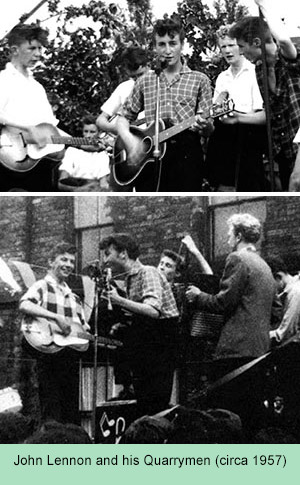
You don’t need anybody to tell you who you are or what you are. You are what you are! – John Lennon

You don’t need anybody to tell you who you are or what you are. You are what you are! – John Lennon
Once you are finished, click the button below. Any items you have not completed will be marked incorrect.
Get Results
There are 5 questions to complete.
You have completed
questions
question
Your score is
Correct
Wrong
Partial-Credit
You have not finished your quiz. If you leave this page, your progress will be lost.
Correct Answer
You Selected
Not Attempted
Final Score on Quiz
Attempted Questions Correct
Attempted Questions Wrong
Questions Not Attempted
Total Questions on Quiz
Question Details
Results
Date
Score
Hint
Time allowed
minutes
seconds
Time used
Answer Choice(s) Selected
Question Text
All done
Deplorable! You need to travel more! This is pathetic!
Deplorable! You need to travel more! This is pathetic!
Embarrassing! Keep trying! We know you're better than that. Play the game again.
Not that bad! But not good either. Play the game again.
Pretty good ... but not perfect.
Perfect! Are you brilliant traveler or what?
